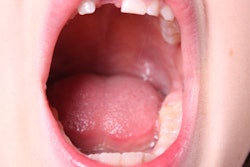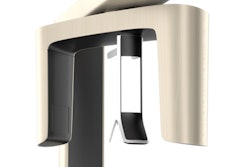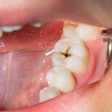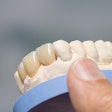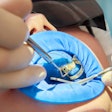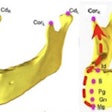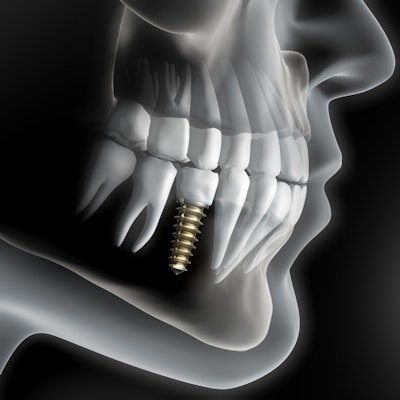
The use of a dynamic computer navigation system to assist in single dental implant placement provided "satisfactory results" in a preclinical trial published on August 20 in the Journal of Dentistry. All 20 implants placed in artificial jaws were within the range of clinical acceptance.
Dental implants are becoming increasingly popular within the field of dental therapy. Clinicians plan implant placement using various digital implant planning software programs that create virtual 3D versions of patients' mouths and optimally align dental implants.
In the study, virtual patients were created using 3D datasets from cone-beam computed tomography (CBCT) scans that represented the anatomical structures, the intraoral situation, and the prosthetic treatment goal. Then, dynamic or static computer-aided implant surgery was used to place the implant.
The in vitro study compared the planned and actual positions of dental implants placed using a dynamic computer-aided implant surgery system (Navident, ClaroNav). It focused on implant procedures for single-tooth gaps.
To conduct this study, five pairs of artificial jaws with four single tooth gaps were manufactured. Using CBCT scans, digital implant planning of 20 implants was performed. Then, a clinician used a dynamic navigation system as a guide for drilling the manual implant placement.
The efficacy of the computer-guided system was evaluated using postoperative CBCT scans. Global deviations were investigated and found to be within the range of clinical acceptance.
"All evaluated implants were in the range of clinical acceptance and no learning curve could be revealed during 20 implant placements," wrote the study authors, led by Dr. Mats Wernfried Heinrich Böse of Berlin (J Dent, October 2022, Vol. 125, 104265).
The mean deviations were 0.78 mm for the entry point, 1.08 mm for the 3D apex, and 0.32 mm for the vertical apex. The vertical angle of deviation was 2.81°.
"Using the investigated [dynamic computer-assisted implant surgery] seems to provide satisfactory results regarding [transferred implant position] in single-tooth gaps in vitro," Böse and colleagues wrote. "Due to documented deviations, a safety distance of more than 2 mm should be respected while implant planning in [dynamic navigation] software."
Getting ready for the clinic
Importantly, the article was an in vitro study and not one with real-life patients. The authors urge dental professionals to use caution, especially regarding adjustments to safety distances, since they haven't confirmed whether or not deviations increase when the protocol is used with patients.
Further, with regard to radiation hygiene, a postoperative CBCT scan is not an option after dental implant placement in single-tooth gaps using dynamic computer-assisted implant surgery, the authors wrote. To make this study feasible for actual patients, an alternative workflow for accuracy assessment needs to be developed independently of the manufacturer's software using intraoral scanners and scan bodies to compare planned and actual implant placement.
The advantages of dynamic computer-assisted implant systems like the one studied are that surgical guides are not required, as the position of the drill is tracked in real time using fixed optical trackers; there is improved drill cooling and smaller space requirements; and there is a possibility of intraoperative adaptations of implant positions during surgery.
However, dynamic systems require more experience, and there is less evidence of their effectiveness. The long-term success of implants also depends on several factors, including available or missing hard and soft tissues; the distances between teeth and other implants; and anatomically critical structures, like nerves, vessels, maxillary sinuses, and nasal cavities.
To make a dynamic navigation system feasible for the clinic, it must be adapted so that clinicians can keep an eye on the screen and the displayed surgical area. High-tech adaptations, like augmented reality glasses that show the 3D drill position in the surgical field, may be a worthwhile next step for this software, according to the authors.
"The combination of [dynamic navigation systems] with virtual/augmented reality glasses could be an interesting option in the process of digitization," wrote the study's authors. "Projection of the screen display showing the 3D drill position directly in the practitioner's glasses and onto the surgical field may be worth striving for. "It could mean a promising added value."
Note: The authors declared no conflicts of interest. Straumann donated the implant material. The managing director of the Navident official distributor in Germany, Switzerland, and Austria provided support for materials and software.





